Related Research Articles
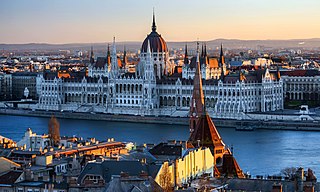
Budapest is the capital and most populous city of Hungary. It is the ninth-largest city in the European Union by population within city limits and the largest city on the Danube river; the city has an estimated population of 1,752,286 over a land area of about 525 square kilometres. Budapest, which is both a city and county, forms the centre of the Budapest metropolitan area, which has an area of 7,626 square kilometres and a population of 3,303,786. It is a primate city, constituting 33% of the population of Hungary.

Bridgetown is the capital and largest city of Barbados. Formerly The Town of Saint Michael, the Greater Bridgetown area is located within the parish of Saint Michael. Bridgetown is sometimes locally referred to as "The City", but the most common reference is simply "Town". As of 2014, its metropolitan population stands at roughly 110,000.
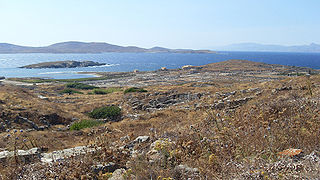
The island of Delos, near Mykonos, close to the centre of the Cyclades archipelago, is one of the most important mythological, historical, and archaeological sites in Greece. The excavations in the island are among the most extensive in the Mediterranean; ongoing work takes place under the direction of the Ephorate of Antiquities of Cyclades, and many of the artifacts found are on display at the Archaeological Museum of Delos and the National Archaeological Museum of Athens.

Kirkwall is the largest town in Orkney, an archipelago to the north of mainland Scotland.

Nexø, sometimes spelled Neksø, is a town on the east coast of the Baltic island of Bornholm, Denmark. With a population of 3,674, it is the second largest town, as well as the largest fishing port on the island. Fishing was previously the mainstay of the town's economy. Nexø is also the site of a distillery and a mustard factory. The town is also a port of call for the passenger ferries linking Bornholm with Kołobrzeg in Poland. Dueodde, the largest beach on Bornholm, is located south of Nexø, in the southeastern corner of the island.
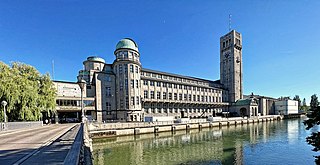
The Deutsches Museum in Munich, Germany, is the world's largest museum of science and technology, with about 28,000 exhibited objects from 50 fields of science and technology. It receives about 1.5 million visitors per year.

The Museum Island is a museum complex on the northern part of the Spree Island in the historic heart of Berlin, Germany. It is one of the capital's most visited sights and one of the most important museum sites in Europe. Originally, built from 1830 to 1930, by order of the Prussian Kings, according to plans by five architects, Museum Island was designated a UNESCO World Heritage Site in 1999 because of its testimony to the architectural and cultural development of museums in the 19th and 20th centuries. It consists of the Altes Museum, the Neues Museum, the Alte Nationalgalerie, the Bode-Museum and the Pergamonmuseum. As the Museum Island designation includes all of Spree Island north of the Karl Leibniz avenue, the historic Berlin Cathedral is also located there, next to the open Lustgarten park. To the south of Leibniz avenue, the reconstructed Berlin Palace houses the Humboldt Forum museum and opened in 2020. Also adjacent, across the west branch of the Spree is the German Historical Museum. Since German reunification, the Museum Island has been rebuilt and extended according to a master plan. In 2019, a new visitor center and art gallery, the James Simon Gallery, was opened within the Museum Island heritage site.

The Pergamon Museum is a listed building on the Museum Island in the historic centre of Berlin, Germany. It was built from 1910 to 1930 by order of Emperor Wilhelm II and according to plans by Alfred Messel and Ludwig Hoffmann in Stripped Classicism style. As part of the Museum Island complex, the Pergamon Museum was added to the UNESCO World Heritage List in 1999 because of its architecture and testimony to the evolution of museums as architectural and social phenomena.

Canada has a large domestic and foreign tourism industry. The second largest country in the world, Canada's wide geographical variety is a significant tourist attractor. Much of the country's tourism is centred in the following regions: Toronto, Montreal, Quebec City, Vancouver/Whistler, Niagara Falls, Vancouver Island, Canadian Rockies, British Columbia's Okanagan Valley, Churchill, Manitoba and the National Capital Region of Ottawa-Gatineau. The large cities are known for their culture, diversity, as well as the many national parks and historic sites.
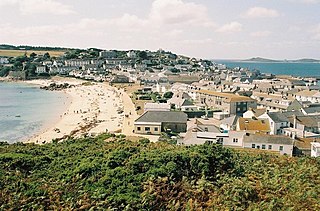
Hugh Town is the largest settlement on the Isles of Scilly and its administrative centre. The town is situated on the island of St Mary's, the largest and most populous island in the archipelago, and is located on a narrow isthmus which joins the peninsula known as the Garrison with the rest of the island.
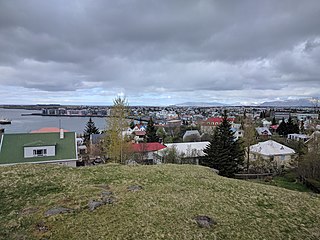
Hafnarfjörður, officially Hafnarfjarðarkaupstaður, is a port town and municipality in Iceland, located about 10 km (6 mi) south of Reykjavík. The municipality consists of two non-contiguous areas in the Capital Region, on the southwest coast of the country. At about 30,000 inhabitants, Hafnarfjörður is the third-most populous city in Iceland after Reykjavík and Kópavogur. It has established local industry and a variety of urban activities, with annual festival events.

The Altes Museum is a listed building on the Museum Island in the historic centre of Berlin, Germany. Built between 1825 and 1830 by order of King Frederick William III of Prussia according to plans by Karl Friedrich Schinkel, it is considered a major work of German Neoclassical architecture. It is surrounded by the Berlin Cathedral to the east, the Berlin Palace to the south and the Zeughaus to the west. Currently, the Altes Museum houses the Antikensammlung and parts of the Münzkabinett. As part of the Museum Island complex, the Altes Museum was listed as a UNESCO World Heritage Site in 1999, in recognition of its testimony to the development of the museum as a social and architectural phenomenon.

City ward — which includes the districts of Highfield, Kelham Island and the city centre — is one of the 28 electoral wards in City of Sheffield, England. It covers the central area of the city. The ward was created following the 2015 local government boundary review out of part of the old Central ward, which, with a population of 36,412, was the largest ward in the UK. City is one of the wards that make up the Sheffield Central constituency.

Spike Island is an inner city and harbour area of the English port city of Bristol, adjoining the city centre. It comprises the strip of land between the Floating Harbour to the north and the tidal New Cut of the River Avon to the south, from the dock entrance to the west to Bathurst Basin in the east. The island forms part of Cabot ward. The area between the Docks and New cut to the east of Bathurst Basin is in the neighbourhoods of Redcliffe and St Philip's Marsh.
John Veltri is a photographer who was born in 1938 in California.

Malakula Island, also spelled Malekula, is the second-largest island in the nation of Vanuatu, formerly the New Hebrides, in Melanesia, a region of the Pacific Ocean.
Khortytsia is the largest island on the Dnieper river, and is 12.5 km (7.77 mi) long and up to 2.5 km (1.55 mi) wide. The island forms part of the Khortytsia National Park. This historic site is located within the city limits of Zaporizhzhia, Ukraine.

Pordim is a town in Pleven Province in central northern Bulgaria and the administrative centre of Pordim Municipality. The town is 155 metres above sea level in the Danubian Plain. In December 2009 the population was 2,117.

The Cape Town Holocaust & Genocide Centre began as Africa's first Holocaust centre founded in 1999. It has sister Centres in Johannesburg and Durban, and together they form part of the association, the South African Holocaust & Genocide Foundation (SAHGF). The SAHGF determines the educational and philosophical direction of the centre. It also conducts teacher training and is the only accredited service-provider for in-service training in Holocaust education in the country. It has trained over 5,000 teachers